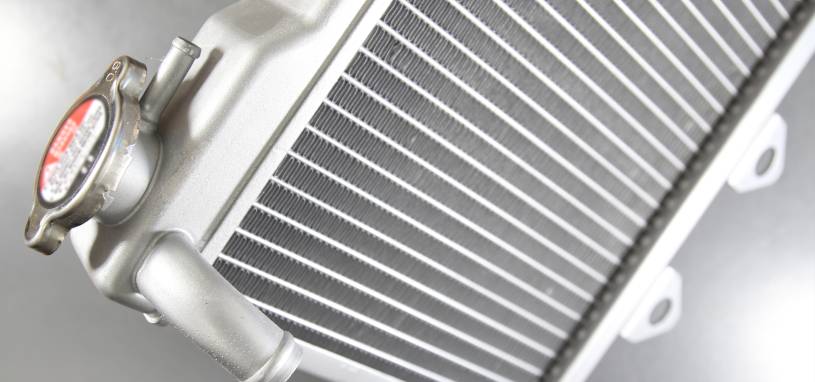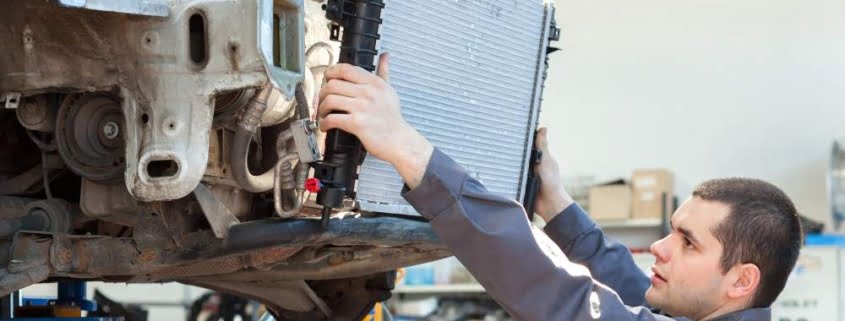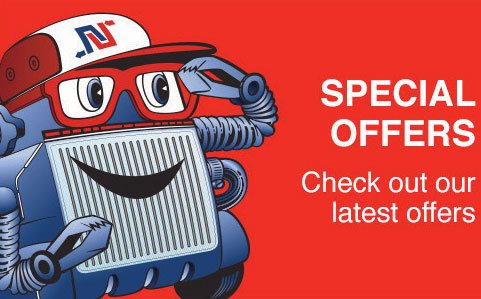Different radiator types
Looking for a new radiator? As an essential part of your cooling system, it’s important to choose a replacement that suits your car’s needs. Whether you’re aiming to simply replace or to upgrade, Natrad has a plethora of options to choose from. That’s why we’re putting together a comprehensive guide on different radiator types. Keep reading to find out the key components of a radiator. Natrad offers a wide range of radiator options, from simple replacements to industrial applications, custom designs, and high performance. Contact your nearest store today to find the right one for you.
What does a radiator do?
First off, it’s a good idea to understand what a radiator does. The radiator is the heart of the cooling system and is relied upon to keep things functioning smoothly. It is a heat exchanger which uses ambient airflow to cool down hot engine coolant. The coolant passes through the radiator’s tubes and circulates around the rest of the cooling system. By cooling this liquid down, it ensures the engine does not overheat and that your car can function at an optimal level.
What are the components of a radiator?
Radiators are made up of several key components that work together to regulate engine temperature and prevent overheating. Understanding these components can help you maintain your radiator and ensure optimal vehicle performance.
Materials
A radiator consists of several different combinations of materials: the core and the tanks. The type of metal can indicate its application and approximate age. For example, copper/brass radiators were common before the 1970s but generally only appear in industrial or heavy-duty applications these days. The most common type of radiators for passenger vehicles are currently plastic/aluminium, meaning the core materials (fin and tube) are aluminium and the tanks are made of plastic. This is usually the stock standard combination and is likely to be found in most replacement radiators as well. Lastly, there are alloy or full aluminium radiators, which is generally used for high performance purposes. This could mean racing, modified vehicles, commercial vehicles and muscle cars just to name a few. Natrad can also produce custom configurations with alloy or copper brass which can be tailored to your exact needs.
Rows
Most copper/Brass radiators use a standard brass tube arranged in rows. Rows help dictate how much coolant can pass through the core, and therefore how much is in contact with the coolant. The more rows there are, the more tubes (and fin) in the core. This means there is more surface area contact between hot coolant and metal — which increases heat dissipation. Most modern vehicles with aluminium radiators have 1-2 rows, anything larger usually indicates a modified or high-performance application. Depending on space restrictions in your vehicle, a core with more rows may be suitable. Copper brass radiators, in particular, make use of more rows, whereas aluminium radiators tend to have fewer rows but more tubes and fins to increase cooling performance.

Shrouding
A radiator shroud encloses the space between the fan and radiator, which helps better direct the air through the radiator instead of around it. A shroud is generally used as a way to increase cooling capacity and is often found on performance radiators.
Pass systems
A pass system directs the flow of coolant through the radiator core. Most modern radiators have 1 pass systems, where the coolant flows through the radiator via a direct path from top tank inlet to the bottom tank outlet. Higher-performance radiators tend to have two or more pass systems, which add a curve or bend in the pathway, so the coolant takes a longer path through the radiator core. This gives the coolant more opportunity to cool down before it exits.
Dimensions
Typically, a radiator’s size is related to the vehicle, but if you’re looking for an upgrade, a bigger radiator may help. Bigger can mean more rows and more cooling, but depending on the material, there may be other ways to increase cooling without adding the extra weight, such as a shroud. What are some different types of radiators for cars? When choosing the right radiator for your car, it’s essential to understand the different types available and their specific benefits. Radiators play a crucial role in maintaining your engine’s optimal temperature, so selecting the right one ensures efficient performance and longevity. Here are some of the most common types of car radiators: Here are some of the most common types of car radiators:
- Crossflow Radiators: These radiators have tanks on either side, allowing coolant to flow horizontally across the core. They are commonly used in modern vehicles for their efficient heat dissipation.
- Downflow Radiators: Featuring tanks at the top and bottom, downflow radiators allow coolant to move vertically. These are often found in older cars and trucks due to their simple and effective design.
- Aluminium Core Radiators: Lightweight and highly efficient, these radiators are used in performance and racing vehicles due to their superior heat dissipation and corrosion resistance.
In addition to these standard types, some radiators cater to specific needs:
- Performance Radiators: Designed for high-performance and modified vehicles, these radiators feature larger cores and improved cooling efficiency to handle increased engine power.
- Electric Radiators: Found in hybrid and electric vehicles, these radiators work independently of the engine, using electric cooling fans to maintain optimal temperatures.
Radiators also come in configurations that affect cooling performance:
- Single Core Radiators: These radiators have a single row of tubes and fins, providing adequate cooling for standard vehicles.
- Double Core Radiators: Featuring two rows of cooling tubes, these radiators offer enhanced cooling efficiency, making them ideal for larger engines or vehicles used in extreme conditions.
- Compact Radiators: Designed for vehicles with limited engine bay space, these radiators maintain efficient cooling without requiring excessive room.
Understanding these options allows you to choose a radiator that suits your vehicle’s engine size, cooling requirements, and driving conditions. For expert advice and professional installation, visit Natrad to ensure you get the right radiator for your car.
Find your car’s ideal radiator type at Natrad
Choosing the right radiator is essential for keeping your engine cool and running efficiently. At Natrad, our experts help you find the perfect radiator type tailored to your vehicle’s make, model, and driving needs. From panel and flat radiators to advanced options for high-performance and heavy-duty vehicles, we offer a wide range of high-quality radiators to suit every requirement. Our skilled technicians ensure a seamless installation, so you can drive with confidence knowing your engine is protected. Visit your nearest Natrad workshop or book an appointment online today to find the ideal radiator for your car and experience reliable, long-lasting performance.









